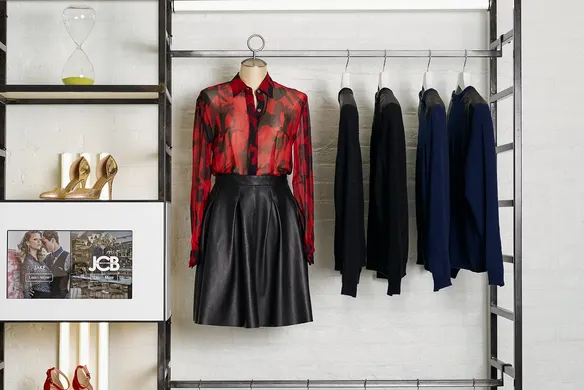The retail landscape has changed a lot for brick-and-mortar stores in recent years. But while some major chains have found it impossible to survive, there is one approach helping retailers ride the wave and benefit from this shift: curation.
Once a word reserved for museums and galleries, curation is now becoming a popular retail strategy to drive in-store traffic and sales. This “less is more” approach economises inventory and tailors offerings for a specific target customer in an increasingly crowded and competitive marketplace.
Free inventory management you can count on
Manage stock from anywhere with Square Inventory Management.
Why curate?
The old saying “If you try to please all you please none” helps explain the shift towards a curated approach. The retail industry is now saturated by many stores all selling similar products in huge ranges, allowing customers to shop around with more choice. Businesses are learning that to thrive in this climate and grab people’s attention, you’ve got to appeal — not to everybody, but someone specific.
Earlier this year, Starbucks announced plans to remove about 200 products from its U.S. stores, explaining that it wanted to simplify operations and focus on efforts that will make a more significant impact on revenue.
But curation isn’t just for global brands. It’s a promising strategy that can yield results for smaller retailers as well. The fact that small, independent businesses can build closer, tailored relationships with their customers makes this even more achievable. Instead of trying to compete with the bottomless inventory of household names, you can provide a catalogue of products that tells your target customer you really know them.
How to curate a retail space
Curation can be beneficial for all kinds of retail stores and doesn’t have to be difficult. Here are some steps you can take to curate your merchandise and establish a stronger brand identity in the process:
1. Describe your store and your core customer
What is your store known for? Who do you cater to? If the answer to these questions is along the lines of “a little bit of everything and everyone”, then you should start the curation process by focusing in on a specific type of customer and pinpointing your store’s USP. This would mean that if you own a boutique whose target audience is broadly “women”, you’d think more exclusively about their age, lifestyle and expendable income. You might realise, for example, that your target customer is specifically high-earning women in their 30s and 40s, who are looking for stylish, statement business wear.
One way to carry out this exercise is to write a detailed description, or a “persona”, of your target customer. You then plan your range around the specific needs and tastes that get revealed. This is a marketing technique used by businesses of all kinds to tap into the mindset and habits of the people most likely to buy their products.
2. Evaluate your sales
One of the main aims of curation is to help you make more sales. To do this, review past sales records and identify your strongest selling items. Any items that rarely sell or are a little hit and miss can be ditched immediately. This helps customers focus on the things they want, and frees you up to build out your most popular ranges.
3. Look for items that just don’t fit
Take a look around your store. Are there any products that seem totally out of place and off-brand? The key to curation is consistency, in that your offerings should all appeal to your target customer. Go back to the persona you created and imagine looking at your shop floor through their eyes — would it be easy for them to pick out their perfect products or would they feel overwhelmed with too much irrelevance?
4. Show off your new collection
Once you’ve reached a level of curation that makes sense from your target customer’s point of view, it’s time to let them come and experience your store. A curated shop looks far better in photos than a higgledy-piggledy one, so make the most of this and post some shots on social media. The fact that you’re making your target customer’s shopping experience more convenient and enjoyable will be a huge pull, so keep your messaging focused on the benefits for them.
Small store owners are in a fantastic position to connect with their customers and create a curated shopping experience. Retail is ever-changing, but if you know your business and your target customer inside out, there will always be opportunities for growth.
Related Articles
The Best Apps for Retailers in 2018
How to Start a Retail Business
![]()











